ASSEMBLY ELECTIONS
Shift in strategy
AJOY ASHIRWAD MAHAPRASHASTA
| The main contest is between the Congress and the SAD (Badal), and the latter talks more about development now. |

CHIEF MINISTER PRAKASH Singh Badal and BJP leader Arun Jaitley at an election meeting in Jalandhar on January 21.
THE feminist adage, "the personal is political", is reversed in Punjab every time elections are just around the corner. In the post-militancy period, politics in the State has been about the bitter rivalry between the Congress and the Shiromani Akali Dal (Badal). Personal animosities have often been politicised for electoral gains, with the word political assuming a personal tone. The electoral campaigns of the two families at the helm of the respective parties' affairs in the State reflect this animosity. Captain Amarinder Singh, the former Chief Minister and the leader of the Congress, hurls abuses at the Badals (the family controlling the SAD) and the Badals spout vitriol on Amarinder. It is against this backdrop that Punjab is gearing up for elections to the 117-member State Assembly on January 30.
Personal rivalries have remained constant even as Panthic issues, which relate to the Sikh community and were part of the electoral agenda in the early 1990s have been replaced by development rhetoric in 2012. For the first time, political parties are not harping on religious issues. They have raised pertinent development issues, though at a very superficial level.
Amarinder Singh's attacks on the Badals for the alleged harassment of his family and the people of Punjab in the last five years under SAD-Bharatiya Janata Party (BJP) rule have sometimes assumed a threatening tone. The Amarinder camp wants to wipe out the Badals from Punjab politics. This idea has found considerable appeal in the rural areas where factional politics has gained ground. On their part, Chief Minister Prakash Singh Badal and his son and Deputy Chief Minister Sukhbir Badal stave off Amarinder's attack with sarcasm.
Such personal attacks have gained ground because Punjab evolved into a bipolar polity after the 1992 elections. Most of the political outfits, including the Left opposition, were rooted out during the anti-militancy operations in the State. This enabled a few families associated with the Congress and the SAD (Badal) to concentrate powers in their hands, leaving not many choices for the voters. Among all the breakaway factions of the Akali Dal, the SAD (Badal) managed to expand its base in all areas of Punjab, pushing other Akali hardliners and factions to the background.
In the last Assembly elections in 2007, Akali parties such as the one led by Simranjit Singh Mann, a proponent of Khalistan, a separate Sikh state, were routed. In the recent elections to the Shiromani Gurudwara Prabandhak Committee (SGPC), the highest administrative body of Sikh gurudwaras, the SAD (Mann) failed to open its account. The SAD (Badal) not only has become the sole "spokesperson" of Jat Sikhs (the upper-caste peasantry) but has been targeting other social groups, paving its way to becoming a development-oriented party instead of a redundant Panthic party.
While the SAD (Badal) has a fixed support base in the rural peasantry, the Congress depends on the urban and rural Hindu voters (who form almost half of Punjab's population), Dalits and factions within the rural Jat peasantry. This electoral arithmetic, supported by anti-incumbency factors, has enabled both the parties to form governments by rotation. No incumbent government has managed to return to power since the formation of Punjab in 1966. This is true in the case of both the Congress and the SAD-BJP alliance.
Third front
However, the 2012 elections have put up an interesting pretext. Manpreet Badal, who was Finance Minister in the Badal government and was until recently seen as the heir to the SAD(Badal) leadership, has broken away to form the People's Party of Punjab (PPP). A three-time legislator from the Gidarbaha constituency which falls in the Badal stronghold, Manpreet quit the party in 2011 citing the autocratic nature of the party leadership. It is widely believed that he was unhappy with Sukhbir Badal's promotion as party president and his subsequent elevation to the post of Deputy Chief Minister. Manpreet was perhaps anguished by the development because he is several years senior to Sukhbir Badal in State politics. Moreover, Manpreet has considerable command over the traditional Akali vote bank because of his lineage and long involvement in party activities.
The PPP has formed a third front called Sanjha Morcha along with the Communist Party of India (the largest Left party in Punjab), the Communist Party of India (Marxist) and the SAD (Longowal). The Sanjha Morcha is not expected to eat into the vote share of the two dominant parties, but some political analysts believe that it can swing the election results either way. The third front has the potential to erode the traditional vote base of the SAD (Badal) in the rural areas and deprive the Congress of its urban votes. With a foreign education and a neoliberal development agenda in a predominantly agrarian economy, which has been facing a severe crisis for some years, Manpreet has a huge appeal among the urbanites, especially the youth.
While in the rural areas, the anti-incumbency factor is expected to affect the SAD-BJP combine, the same is likely to affect the Congress in the urban areas because of the Central government's mishandling of issues such as price rise and corruption. The rest of the electorate could tilt in anyone's favour as the urban votes in individual constituencies have increased significantly because of the delimitation exercise and rapid urbanisation.
In the 2009 parliamentary elections, the Congress won eight seats, taking a lead in 65 Assembly segments, as opposed to the SAD-BJP's six seats and lead in 44 Assembly segments. This indicated the emergence of a strong anti-incumbency sentiment. Sensing the public apathy, Sukhbir Badal launched election rallies much ahead of the announcement of the election schedule. He also advanced the launch of his campaign because Manpreet Badal had started to drum up support for himself against the government in February 2011 itself.
"Ever since Manpreet's rebellion, Sukhbir Badal has been on his toes. He was compelled to introduce governance reforms and consolidate his position in the party and the party's position in the rural areas. He was forced to talk about development as opposed to Sikh identity issues. He also strengthened the party's organisational structure gradually," Ashutosh Kumar, a faculty member in the Political Science Department of Panjab University, said.
Much of this is true. Sukhbir Badal is credited with building a strong organisation at the grass roots in the past five years. He has also been credited with the party's success in the 2007 Assembly elections and 2008 panchayat elections. Sukhbir Badal rose to prominence in the State after he single-handedly saved the party from a debacle in the 2009 Lok Sabha elections. His autocratic functioning was not approved of by senior Akali leaders, but Sukhbir has since consolidated his position in the party by appeasing them and by giving the party ticket to their relatives.

DEPUTY CHIEF MINISTER Sukhbir Badal (left) with Malwinder Singh, brother of Amarinder Singh, who joined the SAD (Badal) on January 7.
While Prakash Singh Badal is seen as a grand old man in Punjab politics, Sukhbir is the one who talks about governance. This is primarily because Manpreet started the rhetoric of good governance in the party and debunked all forms of Sikh identity issues, the plank on which the SAD was formed and has evolved. In order to counter Manpreet's opposition, Sukhbir became the new face of development in the SAD-BJP.
The SAD-BJP government, after the losses it suffered in the 2009 Lok Sabha elections, introduced several governance reforms, including the Right to Service Act, which holds the bureaucracy accountable for delayed services, and made access to farm loans easier. Another important scheme of the Badal government is the Atta-Dal scheme, the only successfully managed one out of many such schemes. It guarantees free wheat flour and pulses to the economically weak. While the normal below poverty line (BPL) number is somewhere close to three lakhs, the SAD-BJP combine in a State-specific survey redefined the number to around 20 lakhs. This has had a good response among the rural poor.
The SAD has been trying to emerge as an autonomous party. While the Jat peasantry is its stronghold, it has inevitably had to rely on the BJP for urban Hindu votes to be elected to power. The SAD's last two election manifestos show that it has been trying to woo the urban voters with its development agenda. The social engineering that the SAD started in the 2009 Lok Sabha elections has taken full form for the 2012 Assembly elections. Pramod Kumar, political analyst and the director of the Chandigarh-based Institute for Development and Communication, said: "The party has been trying to strike an electoral chord with the Hindu Banias [traditionally BJP and Congress voters] and Dalits [traditionally Congress voters] by giving them ample representation. The SAD has managed to woo Dalits such as Majhabi Sikhs and Mahashas, spread over the two main regions of Majha and Malwa. It has given an unprecedented 12 seats to the Bania community."
The party, in response to the changing socio-economic scene, has consciously stayed away from identity politics and has stuck to the core of "Punjab, Punjabi and Punjabiyat", a secular tradition adopted in the Moga declaration of 1996. It has also been trying to create its constituency among government employees, traditionally seen as Congress voters. The SAD-BJP government has appointed 1,23,000 personnel in government services. Similarly, there have been massive recruitments to the State Police, too.
The Congress has not had such a successful electoral campaign. Amarinder Singh is the only leader who has mass appeal. The party's grass-roots support is not as strong as that of its chief opponent. Adding to its problems, 36 Congress rebels are contesting as independents as they were denied the ticket.
Despite several promises and reforms, the SAD-BJP government is perceived as one of the most corrupt in the history of Punjab. There is a widespread feeling among the people of all the three regions of Punjab (Malwa, Majha, Doaba) that the Badals have illegally occupied and monopolised the transport and highly profitable liquor sectors and indulged in illegal sand mining. Three BJP Ministers were removed from the government on charges of corruption. With Sukhbir Badal emerging at the helm, the SAD is largely perceived as a dynastic party instead of a cadre- and ideology-based party that it started out to be.

PRIME MINISTER MANMOHAN Singh displays the ceremonial sword at the end of his address at an election meeting in Amritsar on January 1. At right is State Congress leader Captain Amarinder Singh.
Since the panchayat elections, the SAD-BJP is being seen as running a police state, following the cases of alleged police torture and atrocities. The Congress is banking on the negative sentiment of the people in this regard. Given the emotional nature of Punjab politics, the strategy might just prove right. In addition to the anti-incumbency factor, the biggest advantage of the Congress in Punjab in the Assembly elections is the Central government's timely procurement of agricultural produce. Primarily an agrarian economy, procurement is an emotive and economic issue in the State.
Some statistics could be useful in studying the election scene in Punjab. The vote shares of both the Congress and the SAD have been more or less the same. In the 2002 and 2007 Assembly elections, the margins of difference in the vote shares have not been more than 3 percentage points. The same holds true for the 2009 Lok Sabha elections. Similarly, the margin of winning have been unnaturally small in the majority of constituencies. The SAD relies a lot on the BJP's vote share. Since 2002, the BJP has been contesting in 23 constituencies and the SAD in 94.
The Congress contested the 2007 elections on its own. In 2002, independents won nine seats and the BJP could manage to win only three. The Congress, with 62 seats, formed the government then. In 2007, the BJP performed spectacularly, winning 19 seats. The Congress and the SAD won 44 and 49 seats respectively. The SAD-BJP formed the government. The 2007 elections saw a drastic reduction in the vote share of independents and a complete erosion in the votes of all the other parties. This means that the performance of the BJP, which is once again contesting 23 seats, is crucial to the victory of the SAD (Badal).
However, if the 2009 parliamentary elections are taken into account, there is not much hope for the combine as the BJP was routed in all the Assembly constituencies it had won in 2007. BJP candidate Navjot Singh Sidhu won the Amritsar Lok Sabha seat only because the nine Assembly segments of Amritsar are Akali strongholds. Political analysts believe that the BJP, weak in organisation and vision, could spoil the Akali Dal's chances.
In 2007, the Congress performed well in Malwa, which has 65 constituencies and fared poorly in Majha and Doaba, which have 27 and 25 constituencies respectively. In all probability, the Congress' performance will be better in Majha and Doaba because of the anti-incumbency factor. The Congress faces the challenge of repeating its performance in Malwa, which will see triangular contests. Manpreet Badal, with his aggressive campaign strategy, has directed all his energies to Malwa. The other challenge for all the parties is to address local concerns effectively, a factor that has been consistently pointed out in all election surveys.
Assertive caste groups
With the decline of Sikh identity politics, a progressive trend has emerged with the rise of assertive caste groups. The Dera Sacha Sauda, a predominantly Dalit organisation, was instrumental in the Congress' victory in Malwa in 2007. There are numerous deras (independent sects that attract the backward classes and Dalits because of their exclusion in Sikhism) that have started to influence electoral results. Similarly, the backward communities, such as Rai Sikhs and Kambojs in the border areas, are asserting their rights and privileges. They have always been numerically strong in certain pockets, but caste-based identities had to be relegated to the background as Sikh Panthic issues were dominant during the militancy and post-militancy periods.

PEOPLE'S PARTY OF Punjab president Manpreet Singh Badal.
Shehajadari Sikhs (Sikhs without turbans or Sikhs who have cut their hair), who have a considerable population, incline towards the Congress as they have been discriminated against in the SGPC elections despite a High Court order that they are equally eligible to hold positions in gurudwara committees. After the recent SGPC elections, a few Shehajadari organisations have declared their support for the Congress. Similarly, Dalit groups such as Adharmis, Majhabi Sikhs and Valmikis are beginning to be assertive, and both the Congress and the SAD are trying to woo them. The Bahujan Samaj Party (BSP), which made an impressive start in the 1992 elections by securing 12 per cent of the votes, got a little over 4 per cent of the votes in 2007.
"There are around 39 Scheduled Caste groups in Punjab and all of them are becoming assertive. The modernised Dalit diaspora has also become assertive. It will be interesting to see how they behave politically and influence electoral results. Since both the Congress and the SAD belong to the same caste and class and speak a similar upper-caste language of the Jat Sikhs and are immersed in familial politics, the assertion of the backward classes will surely make a dent on traditional Punjab politics," said Jagroop Singh Shekhon of the Political Science department in Guru Nanak Dev University, Amritsar.
It should only be a matter of time before mainstream parties would be compelled to address the concerns of backward communities directly and talk about the actual concerns of the people, such as the agrarian crisis and livelihood issues.



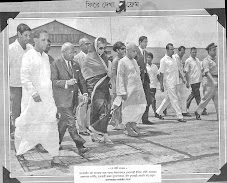



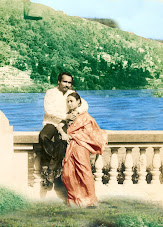






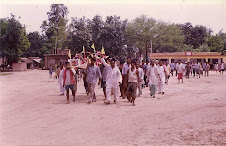

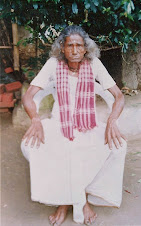
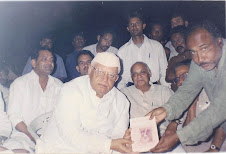
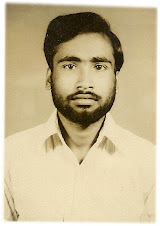



No comments:
Post a Comment